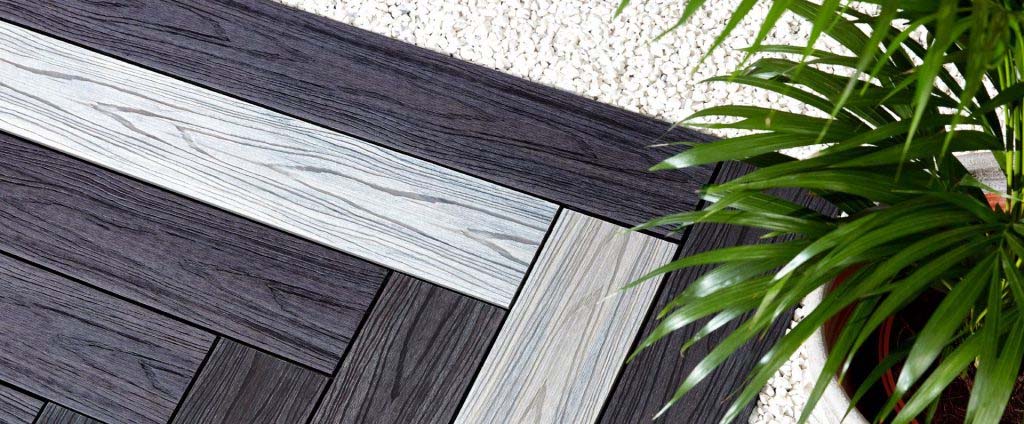Many of our competitors and alternatives in the marketplace use different methods and materials to create their product. It is for this reason that you should always investigate the quality of the wood flour, additives and plastic, before investing in composite decking. You can find out all about our wood plastic decking and what goes into it on our composite decking explained page.
WHAT ARE THE PRIMARY INGREDIENTS IN OUR COMPOSITE DECKING?
The first ingredient is wood flour. Composite Prime avoids using cheaper wood flour from softer woods because it reduces the durability of the final product. Instead, we use oak wood flour – this wood flour comes from wood that typically has seen slower growth but a more complex and stronger structure.
The second ingredient Composite Prime uses is HDPE or High Density Polyethylene. HDPE is our preference over the likes of standard polyethylene or Polyvinyl Chloride (PVC) because it has a much higher tensile strength but remains a flexible material to mould into shape. HDPE is ultra-tough and durable and is what ultimately gives our composite decking its durability. Importantly, we use recycled plastics to ensure that our product remains environmentally friendly and sustainable.
The final ingredient we add to our composite decking is additives such as UV stabilisers which help protect the decking from consistent exposure to sunlight and UV rays. It’s these UV rays that will degrade the wood over time, see it lose colour and weaken the material. By including these additives, we can protect the lifetime of the product.
HOW IS OUR COMPOSITE DECKING DESIGNED?
Our composite decking products are all designed to ensure that they retain the natural feel and texture of wood, but still benefit from the strength and durability of plastic. Our ingredients are combined together and then produced to create a high-quality decking product that is rigorously checked and tested for defects or issues. The decking boards themselves are designed with hollow gaps in between the surfaces, this allows us to create a lighter and easier to fit product. Crucially, we ensure that we don’t compromise on quality and most of our deck walls sit between 5.0 mm (net) and 6.4 mm (gross), often more than other competitors.
Our moulds then incorporate detailed design work to give the final decking product a natural grain texture so that it looks and feels just like traditional wood. We then can also add colour to the product to fit in line with the most recent outdoor trends (this way our customers don’t need to paint the product during its lifetime). Products such as our HD Deck Dual are coloured on both sides to provide the buyer and installer even greater variety in colour and aesthetics.
SO HOW IS COMPOSITE DECKING MADE?
The process of taking all of the above design points and ingredients and producing a high-quality composite decking product happens through granulating, extruding and finishing the product. The granulation process combines the core ingredients and reduces the mixture into particles. From here, these are then “extruded” which means the particles are heated and are compacted. This process produces pellets that are then re-melted again and moulded into the final shape. After cooling, the product is nearing completion and simply needs to be finished (where we add texture and colour).

